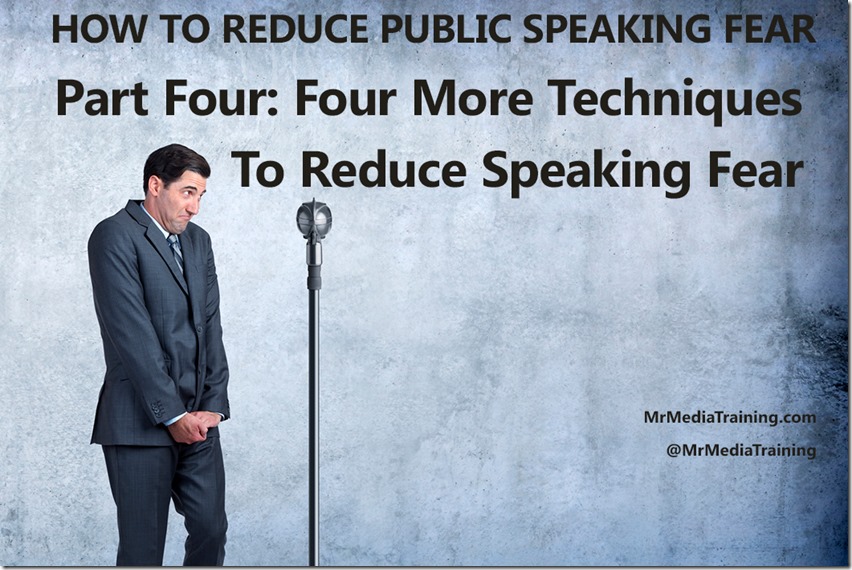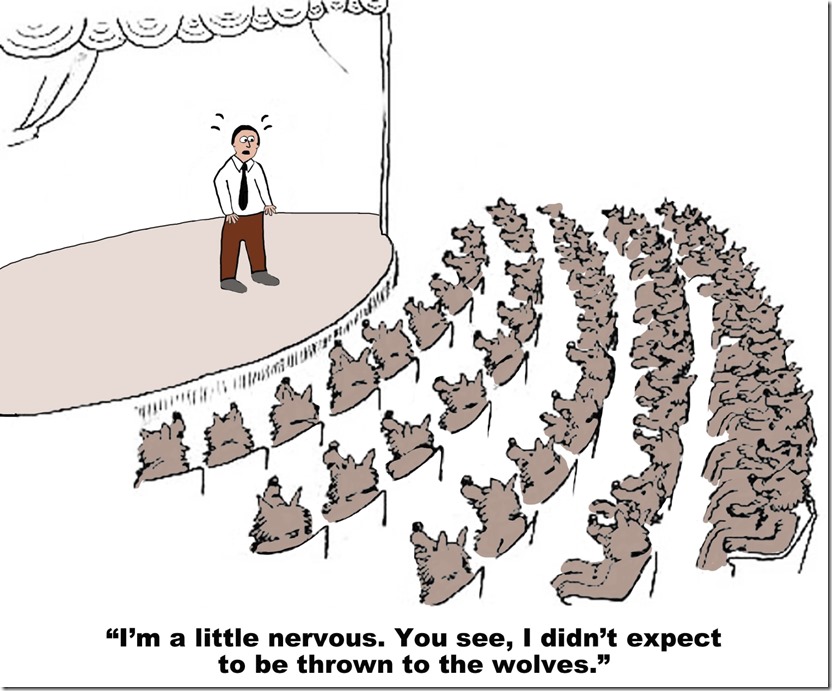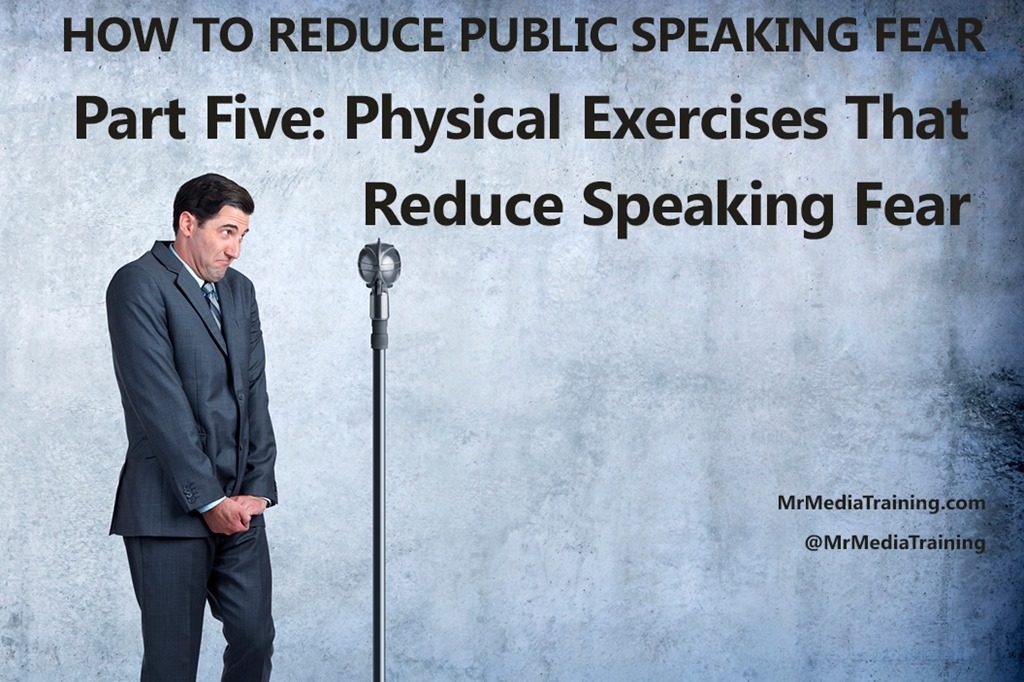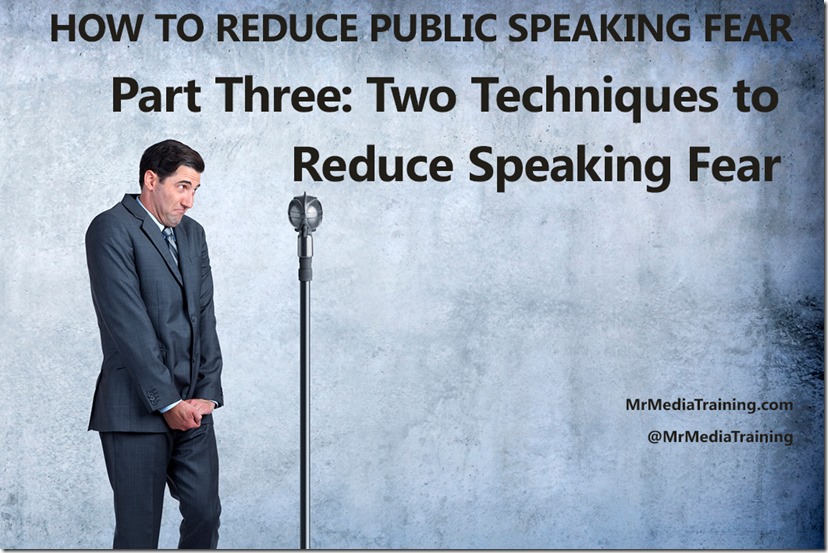Four More Ways To Reduce Public Speaking Fear
This is the fourth post in a five-part series that will help you manage and reduce your fear of public speaking. See the bottom of this post to catch up on the rest of the series.
1. Rewrite Automatic Thoughts
If you’ve had a speaking experience go awry, you might still feel defeated by it. It’s common for speakers to feel defensive or guarded as a result of that experience—and they carry those scars into every new speaking opportunity.
It’s important to learn from past mistakes in order to grow as a presenter. But there’s a difference between learning from the past and carrying that burden with you into a room of people who are completely unaware of how your earlier talks have gone.
Every presentation offers a new opportunity for a reset. Instead of allowing yourself to be bogged down with negative self-talk, a process called cognitive restructuring can help replace your automatic but distorted thoughts with more accurate and productive ones. As examples:
Automatic Thought: “I blew my last talk, and I’ll probably blow this one, too.”
Positive Rebuttal: “I learned from that experience, carefully thought through how I could have handled it better, and am a better speaker today as a result.”
Automatic Thought: “I’m not a good speaker.”
Positive Rebuttal: “I’m imperfect—but who isn’t? They’re going to see how prepared I am and be impressed that I really know my stuff.”
Automatic Thought: “I’m going to screw this up.”
Positive Rebuttal: “I may screw something up—but if I do, I know I can gracefully recover from that momentary error and still deliver a terrific talk.”
Automatic Thought: “They’re going to catch me flat-footed during the Q&A.”
Positive Rebuttal: “If I can’t answer a question, I’ll promise the audience member that I’ll get back to them with an answer. But I truly don’t have to know everything in order to be seen as credible.”
To see the full power of cognitive restructuring, go back and reread only the automatic thoughts above, but out loud and in your most sarcastic voice. Then, reread the positive rebuttals using your most compassionate tone. Which voice would you rather have running through your head as you approach the front of the room?

2. Reappraise Your Fear
If you’ve planned a wedding, there’s a good chance you have experienced the combination of excitement and anxiety that so often accompanies the occasion. You might have felt excited to begin your new life together and celebrate with your closest friends but anxious about how your families would get along and whether the caterer would remember a special request.
That same relationship between anxiety and excitement comes into play in public speaking, says Alison Wood Brooks of the Harvard Business School. The key, she says, is reappraisal, or considering anxiety in a different way. “Individuals who reappraise their anxious arousal as excitement feel more excited and perform better.” She suggests using positive self-talk, such as saying “I am excited!” out loud or using simple self-reminders such as “get excited,” which help speakers adopt an opportunity mindset rather than a threat mindset.
Interestingly, she notes that speakers who used the reappraisal strategy performed better than the ones who simply tried to convince themselves to “calm down.” In that context, attempting to deny or dismiss anxiety appears to be a poor substitute for acknowledging and redefining it.
Acknowledging anxiety by labeling your fears, or putting them into words, can also help. One interesting study published in Psychological Science found that people who described their fear of spiders before being asked to approach one showed less of a physical reaction (as measured by skin response) than people who didn’t.
3. Contextualize Your Fear
Many of us have wrestled with some rather challenging questions: Am I good enough? Do people really think I’m smart? Am I deserving of love and respect? Because presentations make us feel so vulnerable, they often become handy targets onto which we place our fears, anxieties, vulnerabilities, insecurities, hopes, and dreams. That’s a heavy burden for any single presentation to carry.
It helps to place your presentation into a broader context. Is your talk at a midday luncheon really a referendum on your entire worth? Is your next sales presentation truly indicative of your overall capabilities? When you magnify your perception of a talk’s importance far beyond its actual importance, the added pressure makes it more difficult to succeed. When you align the two more accurately, you create a release that allows your focus to remain primarily on your presentation rather than those larger challenging questions.
Another technique is to place your talk into a historical context. Before a big speech, I think about the billions of people throughout time, all over the world, who spoke to a group of people and felt the very same feelings I’m feeling just before I hit the stage. That reminder makes me feel normal and helps me put the presentation into perspective. Yes, I want to perform well, but viewed through the long lens of world history, my presentation seems somehow less important (which, perhaps paradoxically, helps me loosen up and perform better).
4. Flip The Formula
When I ask speakers why they’re anxious, they often say similar things: I don’t want to make an embarrassing mistake, forget a key point, lose my place, be boring, disappoint my boss, become flustered when an unexpected question arises, or appear too nervous.
Those “I” statements are an indication that the presenter is approaching their talk primarily from a self-focused perspective and should flip the formula to redirect their attention toward the audience instead.
Here’s a handy mental exercise. The next time you’re about to speak, look into the audience, select someone at random, and make up a story about them. For example, I might think, “That woman flew to this conference last night. Her flight was delayed by three hours, the airline lost her luggage, and she only slept for four hours. She’s also recovering from a cold, is overwhelmed with work, and misses her family.” Then, I think, “How can I make her life better during the hour I have on stage? How can I help her forget her fatigue, re-energize her, and help her remember what she loves about her work?”
That exercise will help you adopt a service mentality—how can I serve you? And when you’re busy thinking about how you can improve somebody else’s life, there’s less time to be consumed with your own.
In our next and final post on this topic, we’ll share three physical exercises that can help you reduce your public speaking anxiety.
Our Fear of Public Speaking Series
Part One: Introduction to Public Speaking Fear
Part Two: The Public Speaking Mind-Body Connection
Part Three: Two Ways To Reduce Public Speaking Fear
Part Four: This Post
Part Five: Physical Exercises That Reduce Speaking Fear




